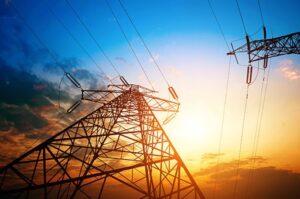 COVID-19 and the global recession are a gut-punch to Africa’s battle against energy poverty. Even before the pandemic, 548 million people on the continent were still living without any electricity, while Africans lucky to have a connection usually pay high prices for power and suffer regular outages – more than one per day on average in Nigeria. Now financial shocks are squeezing power sectors across the continent, making the goal of sufficient electricity for homes, jobs, and industry even farther away. The continent desperately needs a new approach –one that puts abundant, affordable, reliable electricity for all Africans and African businesses as the linchpin of economic recovery and a rebound of incomes. The immediate response to the pandemic has been a long-overdue rush to electrify health centres. But that rush won’t address the broader structural problems facing Africa’s power future, which are likely to get worse as the pandemic continues. Nearly every power utility on the continent is a “zombie” –operating at a loss, but cannot be killed – and the demand shock is exacerbating their stress. Industrial demand for electricity is way down in Kenya, creating every day like a Sunday. The off-grid sector, which primarily supplies small-scale solar lighting systems to households, is also reporting a demand cliff. Private capital to emerging markets also looks jittery, with concerns about rising debt, project delays and a steep decline in investment. Hopes for a second wave stimulus package for Africa, beyond the announced hiatus on debt service, are likely to be modest. And, even if greater public funds do become available, the energy sector will be in a precarious zero-sum battle with healthcare and other social services for the pandemic’s duration. SEFORALL
COVID-19 and the global recession are a gut-punch to Africa’s battle against energy poverty. Even before the pandemic, 548 million people on the continent were still living without any electricity, while Africans lucky to have a connection usually pay high prices for power and suffer regular outages – more than one per day on average in Nigeria. Now financial shocks are squeezing power sectors across the continent, making the goal of sufficient electricity for homes, jobs, and industry even farther away. The continent desperately needs a new approach –one that puts abundant, affordable, reliable electricity for all Africans and African businesses as the linchpin of economic recovery and a rebound of incomes. The immediate response to the pandemic has been a long-overdue rush to electrify health centres. But that rush won’t address the broader structural problems facing Africa’s power future, which are likely to get worse as the pandemic continues. Nearly every power utility on the continent is a “zombie” –operating at a loss, but cannot be killed – and the demand shock is exacerbating their stress. Industrial demand for electricity is way down in Kenya, creating every day like a Sunday. The off-grid sector, which primarily supplies small-scale solar lighting systems to households, is also reporting a demand cliff. Private capital to emerging markets also looks jittery, with concerns about rising debt, project delays and a steep decline in investment. Hopes for a second wave stimulus package for Africa, beyond the announced hiatus on debt service, are likely to be modest. And, even if greater public funds do become available, the energy sector will be in a precarious zero-sum battle with healthcare and other social services for the pandemic’s duration. SEFORALL
